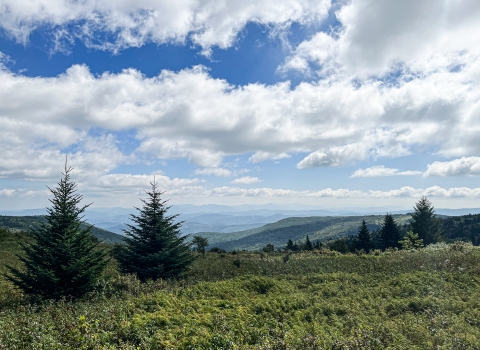U.S. Fish and Wildlife Service Biologists waded through Smith Creek in Calhoun County, Mississippi, in February surveying for the Yoknapatawpha darter, a tiny, bottom-dwelling fish unique to the natural heritage of the State.
They were looking for evidence to confirm that their efforts to return this darter species to the creek had been successful. They found it.
“I got goosebumps when I saw it,” said Service Biologist Matt Wagner.
Yoknapatawpha darters are one of few endemic species to Mississippi and take their scientific name, Etheostoma faulkneri, from “favorite son” and Nobel Laureate William C. Faulkner. His fictional Yoknapatawpha county was based off Lafayette County. The Yocona river was renamed Yoknapatawpha in his writings.
The Yoknapatawpha darter, a species in which males have brilliant colors of orange and blue during the mating season, was last found in Smith Creek in the 1980s. In 2017, the Service and the Mississippi Department of Wildlife, Fisheries, and Parks surveyed over 11,000 feet of Smith Creek and came up empty.
Something needed to be done to restore this natural treasure to the creek.
However, before the species could return to the creek, a failing culvert on the stream needed to be replaced. That job fell to Biologist Angeline Rodgers, who supervises the Lower Mississippi River Fish and Wildlife Conservation Office.
“There was an elevation difference between the bottom of the culvert and the bottom of the stream bed,” said Rodgers. “The darters would struggle to pass through the culvert, particularly during low flows.”
When populations become isolated from one another, gene flows suffer, and they become vulnerable to events such as drought and flooding. Raised culverts prevent them from re-entering the tributaries without help.
The culvert near Oxford was also too small, rusted and a safety hazard for cars, trucks and school buses. A replacement culvert would benefit the county as well.
“It was a perfect storm of events – restoring habitat, while also improving community safety,” said Rodgers.
The Service worked closely with the county to replace the old culvert with a fish-friendly bottomless culvert in 2017. The scientists and engineers paid special attention to the grade, flow and structure structure
Something temporarily or permanently constructed, built, or placed; and constructed of natural or manufactured parts including, but not limited to, a building, shed, cabin, porch, bridge, walkway, stair steps, sign, landing, platform, dock, rack, fence, telecommunication device, antennae, fish cleaning table, satellite dish/mount, or well head.
Learn more about structure of the culvert making sure the Yoknapatawpha darter could use it for passage.
Since its replacement, biologists have collected brood stock of the Yoknapatawpha darter yearly for breeding at the Private John Allen National Fish Hatchery. Fish born of brood stock were fitted with a tag which glows under a blacklight. A different fluorescent color marks which year they were released.
Although some fish can lose their tags in the wild, biologists detected untagged fish that were of significantly different sizes compared to the tagged fish. These Yoknapatawpha darters without tags in a different size class than the tagged fish offer strong evidence of in-stream births.
“We found really small ones without any color and then larger ones that didn't have color as well which we're assuming is the previous year’s recruits,” said Wagner, who works out of the Mississippi Ecological Services Field Office.
On February 1, 2022, the survey team documented 28 fish, including 15 unmarked individuals. They collected genetic samples which will be analyzed at the University of Southern Mississippi for genetic diversity – a key factor in deciding how much longer the creek needs to be restocked.
The survey team consisted of biologists from the Service and the Mississippi Department of Wildlife, Fish and Parks. Close partnership with the State is a valuable part of the Service’s conservation work.
Although the Yoknapatawpha darter, a piece of Mississippi heritage, is returning to Smith Creek faces conservation challenges due to habitat fragmentation, urban development, agricultural runoff and climate change climate change
Climate change includes both global warming driven by human-induced emissions of greenhouse gases and the resulting large-scale shifts in weather patterns. Though there have been previous periods of climatic change, since the mid-20th century humans have had an unprecedented impact on Earth's climate system and caused change on a global scale.
Learn more about climate change . Yet due to the work of the Service’s biologists, the Private John Allen National Fish Hatchery, as well as the Service’s partners in Mississippi, the Yoknapatawpha darter now has a fighting chance.




